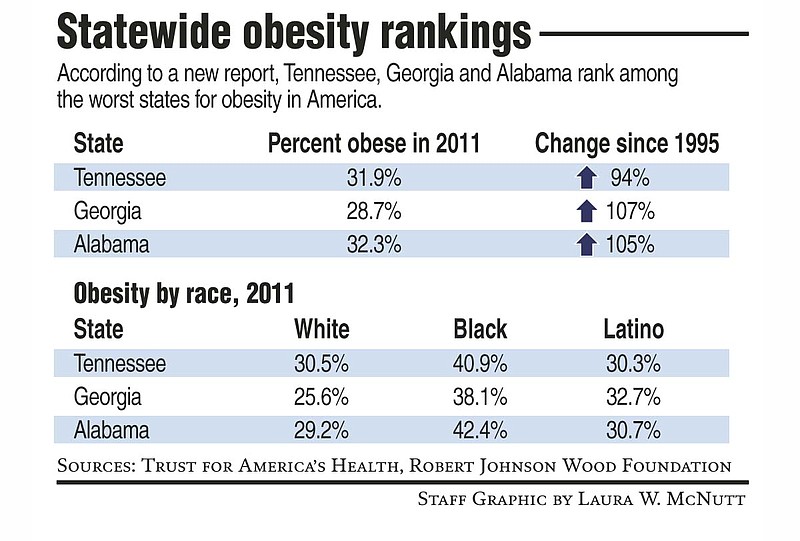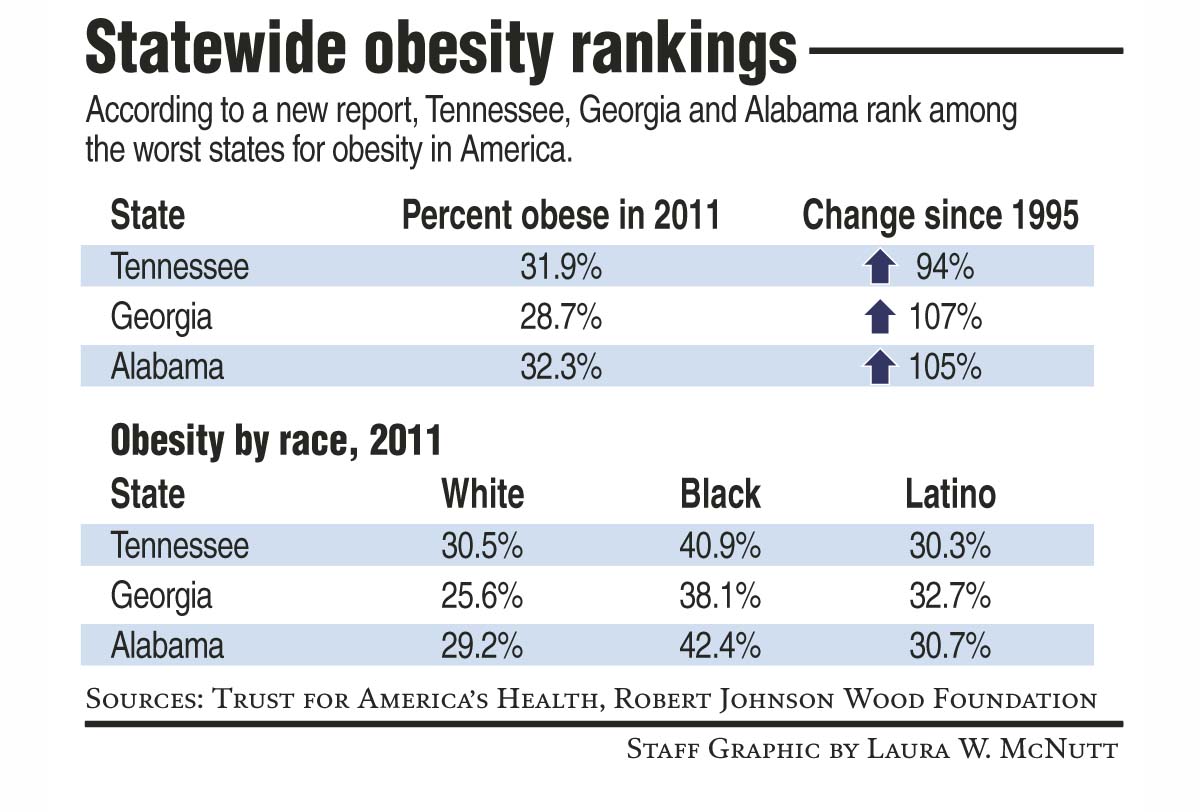The South finished at the top of a national study, but it's not a proud position - the region is stuffed with seven of America's top 10 fattest states.
Titled "F as in Fat: How Obesity Threatens America's Future 2011," an obesity report released Thursday examines giant waistlines below the Mason-Dixon line, even referring to the Southeastern region as "the Diabetes Belt."
Between 2008 and 2010, Alabama finished second and Tennessee finished fourth nationwide for obesity rates. Both states followed Oklahoma for the fastest-growing rates of obesity.
"Today, the state with the lowest adult obesity rate [Colorado] would have had the highest rate in 1995," said Jeff Levi, executive director of the Trust for America's Health, a nonprofit advocacy group behind the study.
Seven states - including Alabama and Georgia - have doubled their obesity rates since 1995. Tennessee's went up 90 percent.
No state experienced an obesity decline, the report shows.
With 34.4 percent of its residents considered obese, Mississippi has the nation's highest obesity rate, with Colorado's 19.8 percent the lowest.
No Southern state cracked the bottom 10. Eight fell within the top 10 for diabetes, a disease linked to obesity.
"I'm sure weather plays a certain role," said Dr. Keith Weaver, a general practitioner in Hixson.
In other parts of the country, snow- and winter-related sports such as skiing, snowboarding and ice skating get people out of the house during the coldest months, but such sports don't really exist down South, so people sit inside and pack on the pounds.
"Winter is just a transition from one type of [exercise] to another in a place like Colorado," he said. "When it hits 40 degrees in the South, people hole up and hibernate."
Weaver blamed the national epidemic on two interrelated problems - young professionals too busy to eat anything except fast food, and a lack of parental control over what children eat.
"As people have gotten busier, we're not passing on good exercise habits to the next generation," he said. "Fast food is our big downfall. Even if you get the chicken sandwich or whatever, it's not good for you."
The report distinguishes between two often-used terms - overweight and obese - saying people who are overweight have too much body weight for their height. Obesity is defined as an "excessively high amount of body fat" in relation to lean body mass, according to the study.
Two-thirds of adults and nearly one-third of children and teens now are obese or overweight in the nation, the report states.
The report touches on non-health-related costs associated with such a rapid collective widening, including $73 billion in "lost productivity." People can't work because they're too large or because they die early from heart disease, diabetes and high blood pressure - all linked to obesity.
Americans spend more than $150 billion annually on health care linked to obesity concerns, the report states.
Other statistics look at lost potential job opportunities - nearly one-third of Americans between 17 and 24 are too heavy to join the military, for instance.
The study also suggests that about half of the more than 1.1 million incoming and current firefighters are overweight, while about a third are obese.

